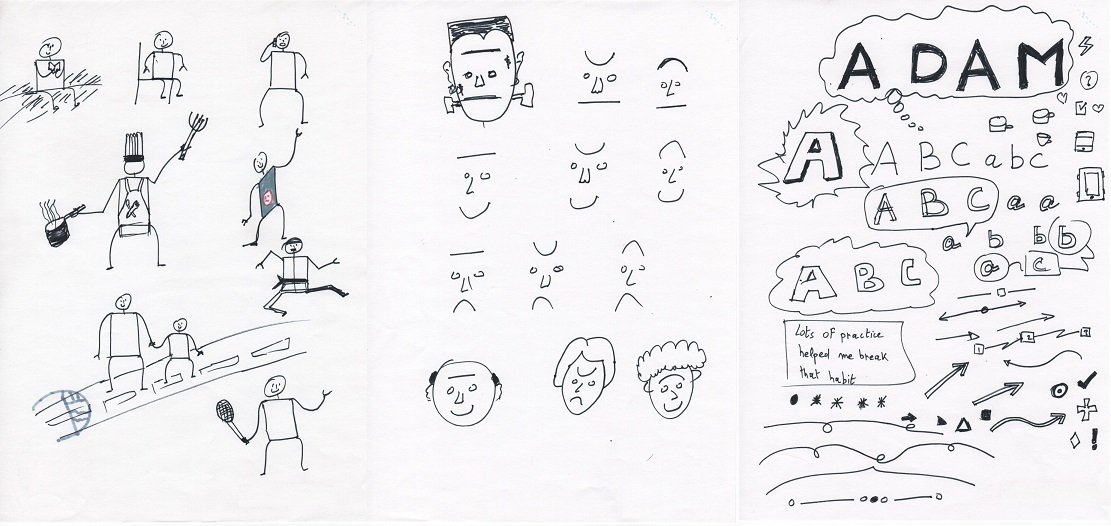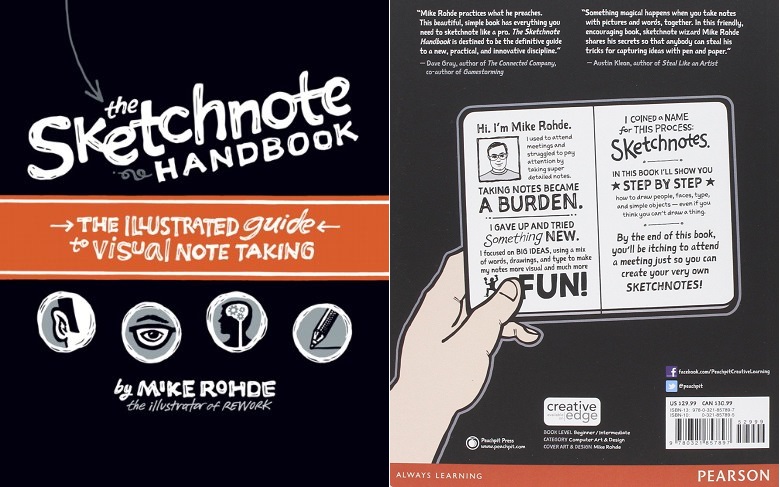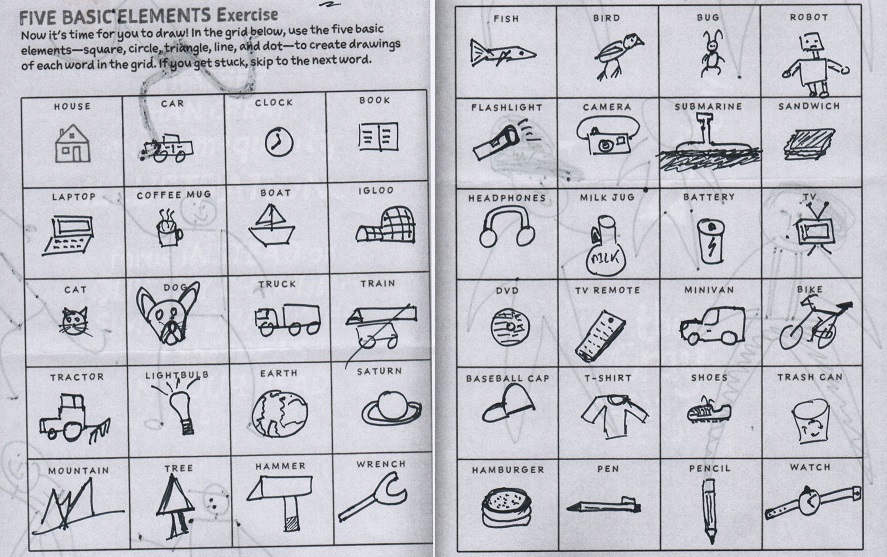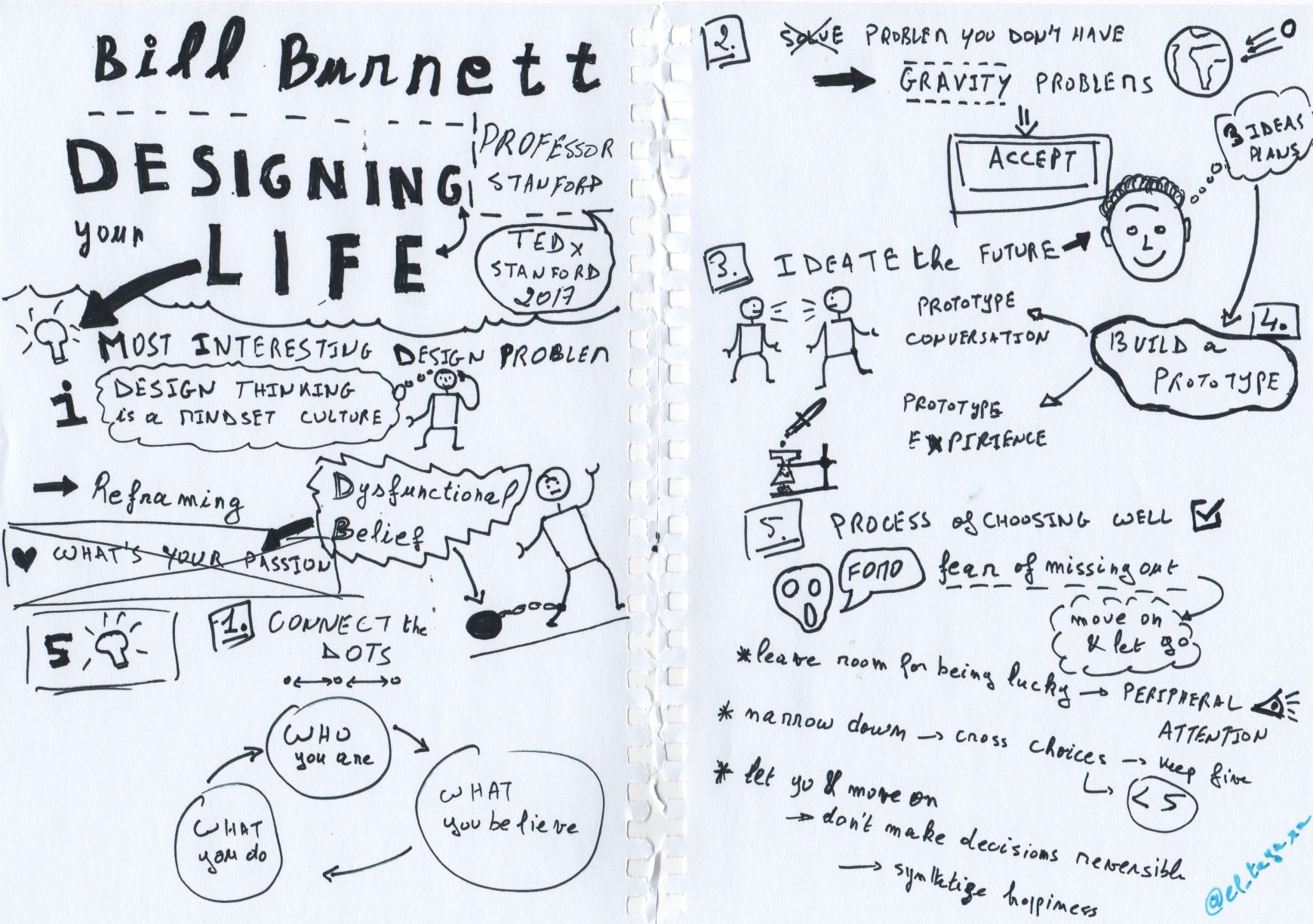Graphics are always something that catch my eye and make communicating ideas more compelling to my mind. Whether decorating a text or completely illustrating a concept with an image, I think it strengthens the impact of the underlying message.
One of my favorite demonstration of the increased impact drawing ideas can have is the RSA animation of Dan Pink’s Drive talk. I’ve also seen the impact in brainstorming sessions when graphic facilitation techniques are used by the group.
As well as I was convinced of the graphic facilitation power as a tool, I was also convinced, alas, that it’s not something I could do and get the benefits.

My belief was founded on the assumption that it required strong drawing skills, talent ; things I don’t consider having. I was convinced to be right in my assumption and had accepted the idea that this kind of approach is not for me, without even trying.
Recently I stumbled on ads for graphic facilitation trainings. These trainings claimed to get people to start benefiting from graphic facilitation in two days. The first thing I said to myself is that it’s too good to be true.
At best I’ll learn a methodology, and since I don’t know how to draw, I won’t be able to get the full benefits. Since my drawings will be awful, they won’t be of any good to me.
My belief started to change when a couple of friends I knew attended such training and showed me what they were able to do. I found that their work improved the way they shared their ideas. Even though they still had a lot to master the art of graphic facilitation, what they were able to achieve had a noticeable impact. Both told me that it’s possible for anyone to get in the starting blocks, start benefiting from the power of graphic facilitation with a reasonable effort.
This positive feedback made me change my mind and start believing I had a chance. I was willing to give the graphic facilitation a try before deciding that I can’t do it. I just needed a plan now, and this is where chance played its role.
Lately at work, while I was discussing with a colleague at his desk, I noticed a book lying in a box. With his dark cover, high contrast text and drawings, the book caught attention. I looked closer at the title ; it read ‘the Sketchnote HANDBOOK’. I was immediately intrigued and interested. “Are you reading this book?” I asked. My colleague answered me with a smile as I was cleaning the dust with my hand and reading its back-cover. “Well I’ll borrow it, if you need it, you know where to find it …”.

The back-cover description was enough to convince me that I found my plan to start trying using graphics. The book is based on Mike Rhode personal experience. As a recognized subject matter expert, Mike promise to deliver a step by step process that will work even for people who think they can’t draw a thing! It looked like the book was waiting for me, and I had my plan now to get started on my graphic facilitation journey.
I was so excited that started reading the book on the same evening. I found it easy to read and captivating. In two evenings I had finished the book and went through the practical exercises. The first half of the book explains the concepts and the step by step method elaborated by the author. The second half is rather practical and guides the reader to start applying the techniques explained.

The best part is that the promise made in the back-cover is met, from the very first drawing exercise I realized that my belief was wrong, although I’m not an artist, I can draw ! Indeed, sketchnoting is about ideas and not about art, it’s one of the key messages in the book. Moreover, beside explaining the process and the techniques, the book itself is designed as a collection of sketchnotes making it also a great reference to illustrate the explained techniques and a source of inspiration for the reader.
I really enjoyed reading this book and got the return on my time invested shortly, just after finishing the book I drew my first sketchnote for Designing Your Life by Bill Burnett, one of my favorite talks !

If like me you’re interested in applying sketchnoting, and don’t think it’s something you can jump into on your own, I hope my post helped you change you mind. Happy sketchnoting!